What was it like to grow up during the 1920s and the Great Depression?
Many families enjoyed economic prosperity during the optimistic 1920s. With rising incomes they became consumers, able to buy such modern conveniences as electric refrigerators and other appliances. They were more mobile, driving more family cars on better roads. The widespread ownership of radios connected people with a wider world, decreasing the isolation of rural families. Fashion reflected a more independent, modern outlook, particularly for women as they donned shorter skirts and bobbed their hair.
Prosperity came to a screeching halt for many Americans on "Black Tuesday," October 29, 1929 – the day of economic panic that marked the beginning of the Great Depression.
Facing the greatest deprivation Americans had ever known, families had to learn to get by. They did without luxuries and, in some cases, necessities. They used and re-used clothing and other items until they were worn out. As they struggled to make ends meet, they used ingenuity and discovered inner resources that helped them to survive the harsh years of the 1930s.
Farm families had gotten an early taste of economic hardship during the 1920s as prices for farm products and the value of farmland, on the decline since World War I, continued to fall. With the Great Depression, many families lost their farms and migrated to urban areas in search of work and aid from President Franklin D. Roosevelt's New Deal government programs.
With record unemployment, children competed for jobs with their elders in an effort to make a contribution to their families. Children of the 1930s were subject to child labor reform measures of the 1920s, which limited their workday to 8 hours, and provided guidelines for employment of minors. Many children were self-employed, collecting junk to sell or doing odd jobs for neighbors.
In spite of hard times, children found creative ways to have fun, enjoying many of the toys and games kids have today, but with homemade elements. Favorite pastimes included going to the movies, playing sports, and enjoying popular board games.
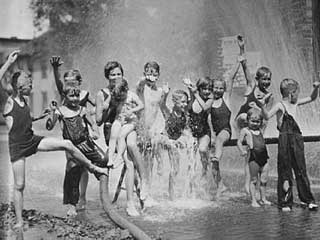

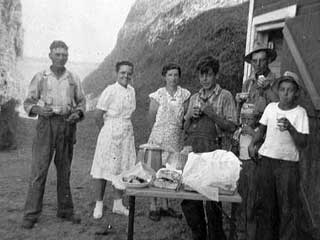
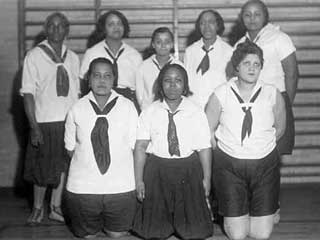
Not All Gloom and Doom
As parents were using their ingenuity to guide their families safely through the dark days of the Great Depression, their children were creating their own fun.
Those that could afford the dime admission, like William M. Cummings and Robert and George McKewin, flocked to movie theatres to be swept away by such adventures as King Kong, The Moon Riders, and The Wizard of Oz. Many children huddled around the family’s radio to listen to the adventures of Tom Mix, Buck Rogers, and Jack Armstrong, the All-American Boy.
Children found a similar escape in reading, enjoying books and the "funnies" in the newspaper. Popular board games, such as Lexico (1931 - later Scrabble®), and Parker Brothers’ newly invented Monopoly® game (1935), offered other stay-at-home activities for children. Both boys and girls participated in outdoor games and played sandlot baseball and other sports, often substituting makeshift equipment, like sticks and stones, for real bats and balls and, like Robert D. Hill and Dorothy Snell Curtis, making the most of Minnesota winters.
For the poor, homemade toys, such as cars, dolls and puppets, were cherished gifts, as were recycled toys – used toys that had been repaired by volunteers from charitable organizations.
Though holidays were not as festive as they might have been in better times, children still looked forward to celebrating Halloween, Christmas, and other festival days.
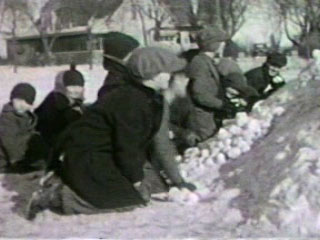
Getting By
The "Roaring Twenties " call to mind a modern, prosperous, yet controversial decade. Expendable income was on the rise, and more consumer goods than ever before became available. But the good times would not last.
The confidence and feeling of security enjoyed by many American families, like that of Robert D. Hill, evaporated following the market crash of October 29, 1929, when the financial rug was pulled out from under them. Millions of breadwinners, like the fathers of Mary Joy Breton and Michael Sanchelli, found themselves out of work. Faced with the greatest deprivation many would ever know, families struggled to make ends meet. Very few families were unaffected by the Great Depression .
The children of the Great Depression learned of necessity to be resourceful, wearing hand-me-down clothing, going without luxuries of any kind and, at times, going without meals.
Many young men joined the Government's Civilian Conservation Corps, which promised temporary employment and steady wages, and even young children, found work in an attempt to make a financial contribution to their families -- in some cases giving up educational opportunities to do so.
Children learned the value of a dollar and how to save, lessons that would stay with them throughout their lives and that would be reflected in frugal and careful habits: darning socks and patching play clothes for their baby boom children, scraping the inside of an egg shell to get every last bit of egg white, clipping coupons and saving Gold Bond trading stamps.
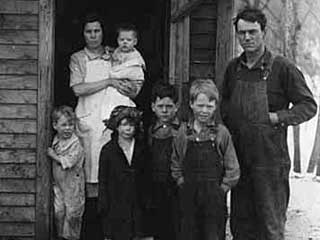
Making a Contribution
Members of Minnesota's Greatest Generation generally share a strong work ethic. Many boys held jobs working as farm help, newsboys, pinsetters in bowling alleys, and messengers, while their sisters helped out in more domestic capacities at home or as hired help.
Some children, like Michael T. Sanchelli, were self-employed, searching junkyards for castoffs that could be sold. While many children who sought employment during the Great Depression, like Robert D. Hill, did so to make a much-needed financial contribution to their families, others, like William M. Cummings, worked to earn spending money. Rural children, like Mary Joy Dean, helped out on the farm, working without pay.
These young workers benefited from the efforts of the National Child Labor Committee, whose work in the 1910s and 1920s resulted in protective child labor laws. These laws mandated age limits, types of jobs appropriate to children of different ages, and the number of hours per week a child could be expected to work. Children under 16 years of age were allowed to work only during the daytime, with a maximum of an 8-hour workday and a 48-hour workweek.
By 1930, 7.8% of Minnesota's children aged 10 to 17 years were "gainfully employed," with 11.3% of all boys and 4.2% of all girls in that age group employed. The vast majority of boys and girls worked as farm laborers, many as unpaid help on family farms. Urban boys commonly held jobs as factory operatives or newsboys, or were apprenticed to learn a trade. Girls typically worked in factories or as domestic servants in private homes.
Laws also mandated that all children ages 7 to 16 (except for those that had completed the 8th grade) must attend school during the entire session, which averaged 180.6 days according to the 1920 census, ranking Minnesota 10th in the nation for length of term. Rural students could get exemptions for helping their parents on the farm from April 1st to November 1st.
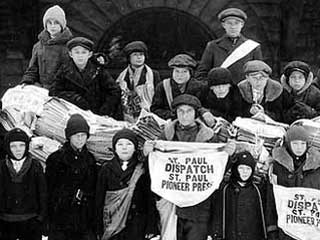
Citations:
- Analysis of State Child Labor Laws. New York City: National Child Labor Committee], 1928.
- Drake, Robert M. A Prideful Recollection of the Old CCC. The Minnesota Volunteer, July-August 1983, p. 3-9.
- United States Department of Labor; Morris, Richard B., Editor Bicentennial History of the American Worker. Washington, DC: U.S. Government Printing Office], 1976.
- Black Tuesday. Wikipedia.com, April 24, 2006.
- The Great Depression. Franklin D. Roosevelt Library and Museum, 2006.
- Franklin D. Roosevelt, 32nd President of the United States. Franklin D. Roosevelt Library and Museum.
- New Deal. Wikipedia.com, July 29, 2006.
- Alphabet Agencies. Wikipedia.com, July 15, 2006.
- Young Citizens League, Minnesota Chapter, Notebook, 1948-1962. Minnesota Historical Society Manuscripts Collection.
- Cummings, William M., Diaries and Related Papers, 1924-1995. MHS Manuscripts Collection.
- McKewin, Robert Williams, Going to the Movies. Minnesota Historical Society: Share Your Story, Robert W. McKewin, 2006.
- Top Rated 1930s Titles. IMDb, 2006.
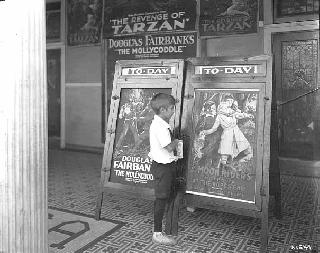 Photo: Boy looking at movie playbills in theater lobby, 1920.
Photo: Boy looking at movie playbills in theater lobby, 1920.- The Moon Riders. IMDb, 2006.
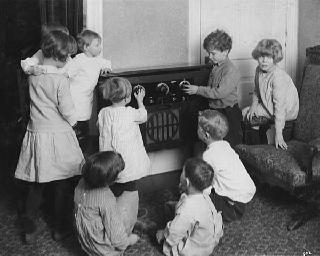 Photo: Children listening to radio at Sheltering Arms, Minneapolis, 1926.
Photo: Children listening to radio at Sheltering Arms, Minneapolis, 1926. - Tom Mix - Background. Ralcorp, Inc. 2000.
- Buck Rogers in the 25th Century. The Buck Rogers Web Site, 2005.
 Object: Jack Armstrong telescope radio program premium, 1930s.
Object: Jack Armstrong telescope radio program premium, 1930s.  Photo: Children looking at picture books, Hallie Q. Brown Nursery School, St. Paul, 1938.
Photo: Children looking at picture books, Hallie Q. Brown Nursery School, St. Paul, 1938.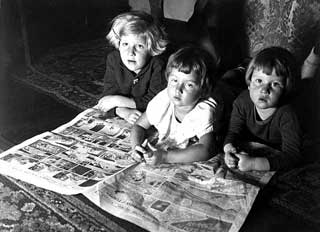 Photo: Schmidt children reading the comics, 1934.
Photo: Schmidt children reading the comics, 1934.- Scrabble. Wikipedia.org, 2006.
- Monopoly (Game). Wikipedia.org, 2006.
- Hill, Robert D. Reminiscences and Genealogical Charts, 1974-1997. MHS Manuscripts Collection.
- Curtis, Dorothy Snell Changing Edges. Dorothy Snell Curtis, copyright 1990, used with permission from the author.
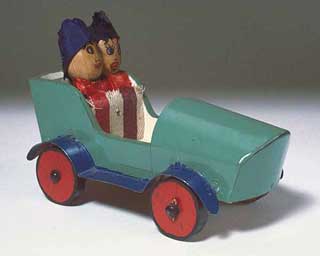 Object: Homemade car, 1930.
Object: Homemade car, 1930.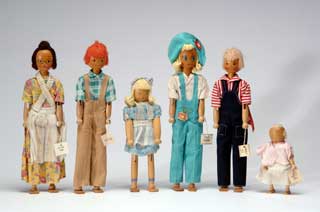 Object: Dolls made from clothespins, 1930s.
Object: Dolls made from clothespins, 1930s.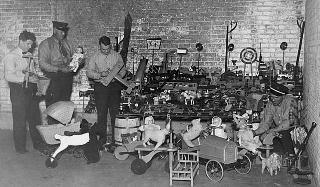 Photo: Firemen looking over the toys they have repaired, Engine Company Number 2, St. Paul, 1931.
Photo: Firemen looking over the toys they have repaired, Engine Company Number 2, St. Paul, 1931.
 Photo: Webster School first grade students making a paper mache pumpkin, St. Paul, 1933.
Photo: Webster School first grade students making a paper mache pumpkin, St. Paul, 1933.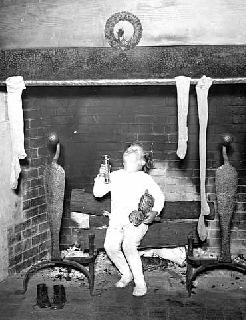 Photo: Child peering up fireplace with a flashlight.
Photograph Collection ca. 1940.
Photo: Child peering up fireplace with a flashlight.
Photograph Collection ca. 1940.
- Hill, Robert D., Reminiscences. MHS Manuscripts Collections.
- Breton, Mary Joy Dean, Surviving the Great Depression. Minnesota Historical Society: Share Your Story.
- Sanchelli, Michael T., Reminiscences, 1991-1993. MHS Manuscripts Collection.
- Great Depression. Wikipedia.com, 2006.
- The Great Depression. Franklin D. Roosevelt Library and Museum, 2006.
- Drake, Robert M., A Prideful Recollection of the Old CCC. The Minnesota Volunteer, Vol. 46, No. 2691983, p. 3-9. St. Paul, MN: Minnesota Department of Natural Resources, 1983.
- Cost-of-Living Calculator. American Institute for Economic Research, 2006.
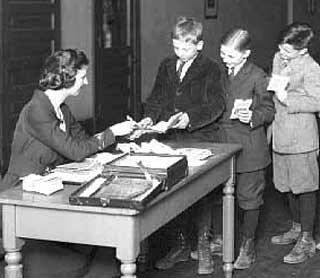 Photo: Harriet School students, learning about banking, 1920.
Photo: Harriet School students, learning about banking, 1920.
 Photo: Newsboys, St. Paul Pioneer Press, 1923.
Photo: Newsboys, St. Paul Pioneer Press, 1923. Photo: Western Union boy on a bicycle, 1925.
Photo: Western Union boy on a bicycle, 1925.- Sanchelli, Michael T., Reminiscences, 1991-1993. MHS Manuscripts Collection.
- Hill, Robert Darwin, Reminiscences and Genealogical Charts, 1974-1997. MHS Manuscripts Collection.
- Cummings, William M., Diaries and Related Papers, 1924-1995. MHS Manuscripts Collection.
- Breton, Mary Joy Dean, Living Off the Land. Minnesota Historical Society: Share Your Story, 2006.
 Document: Analysis of State Child Labor Laws - Minnesota.
Document: Analysis of State Child Labor Laws - Minnesota.- Analysis of State Child Labor Laws. New York City: National Child Labor Committee, 1928.
- Fifteenth Census of the U.S. - 1930 - Population, Vol. IV. Washington, DC: U.S. Government Printing Office, 1931-1933.
 Document: Child occupation statistics for Minnesota, 1930.
Document: Child occupation statistics for Minnesota, 1930.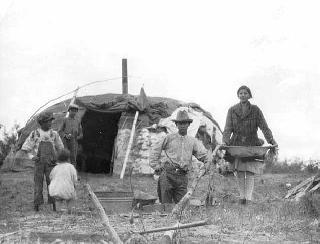 Photo: Fanning and threshing wild rice, 1920.
Photo: Fanning and threshing wild rice, 1920. Document: Child Labor and Education in Minnesota, 1928.
Document: Child Labor and Education in Minnesota, 1928. Photo: Children in a classroom in Jackson School, Minneapolis, 1925.
Photo: Children in a classroom in Jackson School, Minneapolis, 1925.- Fourteenth Census of the United States taken in the year 1920, Vol. 3, Population. Washington, DC: U.S. Government Printing Office, 1922.


